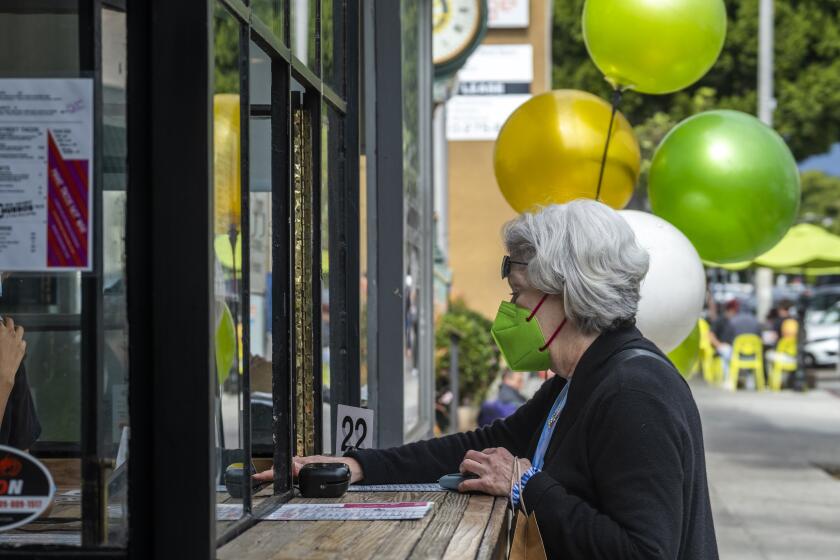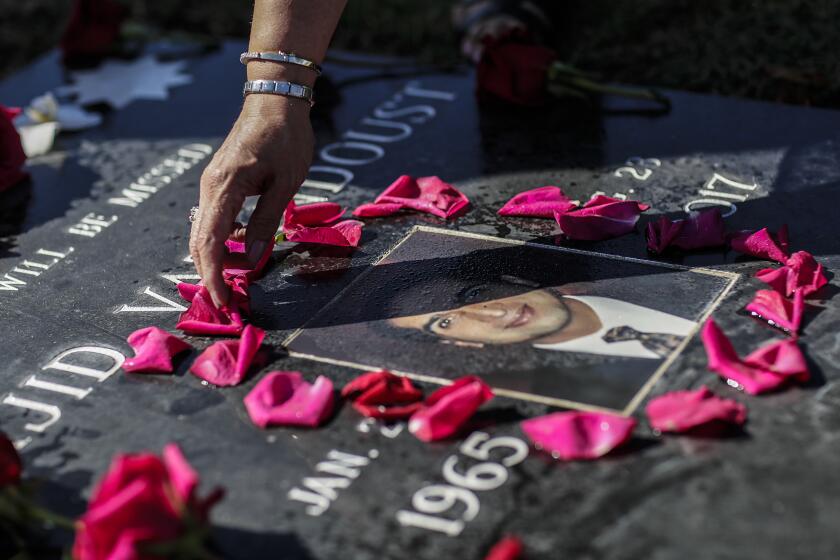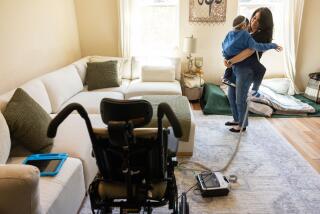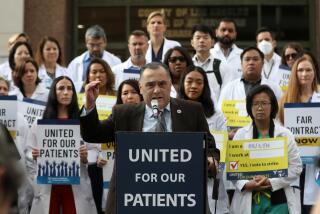‘We can’t pay what the market demands’: Community clinics struggle to hire, retain workers
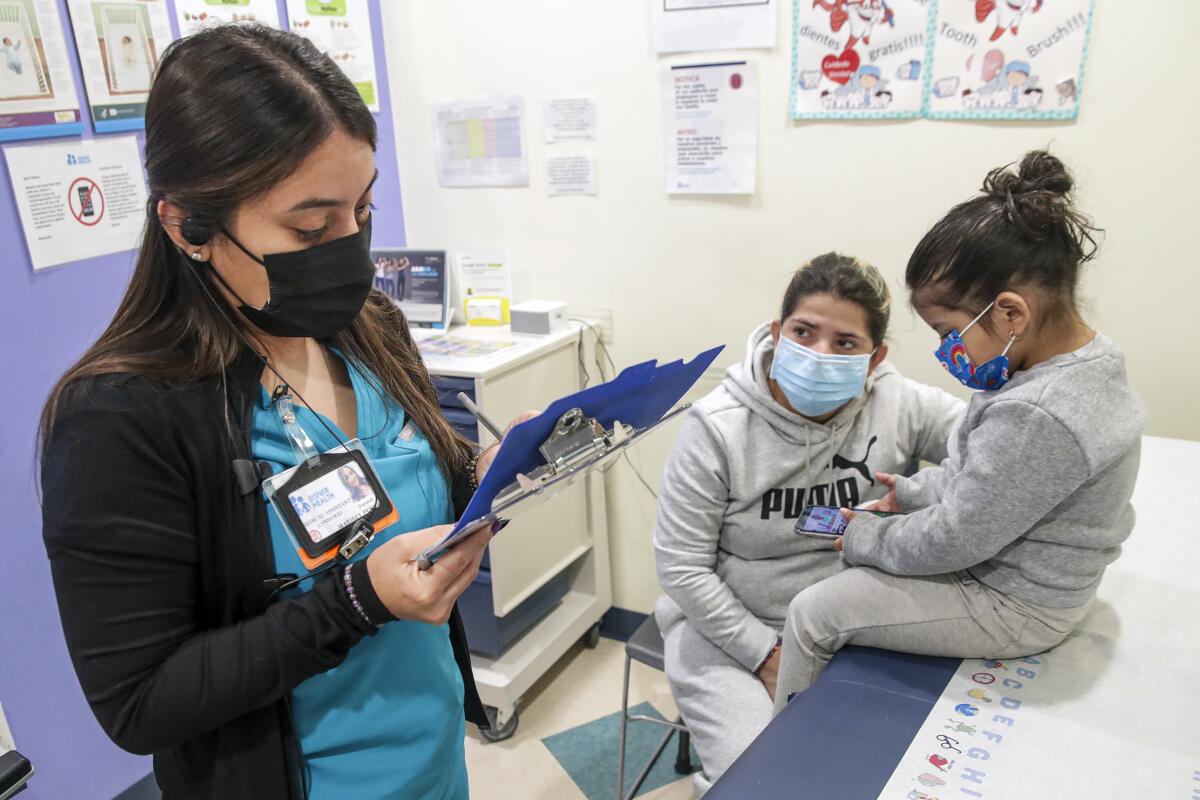
- Share via
A community clinic in Huntington Park has two dentists eager to come back to work — a coveted service for poor and uninsured patients who often go without dental care.
For the record:
4:24 p.m. March 21, 2022An earlier version of this article said that medical assistants at community clinics perform Pap smears. They assist with the procedure.
But dentists need dental assistants to prepare rooms, run X-rays and help with equipment. And South Central Family Health Center has been unable to hire enough of them.
That amounts to more than 2,000 patients annually going without dental care they could otherwise have had, said David Roman, communications director for the center, which operates clinics from South L.A. to Cudahy.
Without three more assistants, “we can’t bring back two dentists,” Roman said. “And it’s not just us.”
Community clinics, which provide primary and preventive care to poor and uninsured patients, have struggled to hire and hang on to workers as the pandemic has dragged on in California.
Clinic staffers say the shortages have left patients sitting longer in waiting rooms and on the phone, slowed down referrals to medical specialists, undermined preventive screenings and exacerbated employee burnout.
“We’ve just been so understaffed that every day feels like it’s a marathon,” said José Alejandro Santana Lomeli, a medical assistant at Salud Para La Gente clinic in Watsonville.
Last year, employee turnover at such clinics reached an average of nearly 20%, according to a survey by the California Primary Care Assn. For medical assistants, the vacancy rate hit 24% — nearly tripling from a year earlier — and for dental assistants, it doubled to 20%.
Some doctors and public health experts are continuing to take COVID-19 precautions that go above and beyond the new minimum mandates.
“Even receptionists and benefits counselors are getting gobbled up by the big giants” — medical centers such as Kaiser and UCLA — “that can pay significantly more than we can,” said Jim Mangia, chief executive and president of St. John’s Community Health. “We can’t pay what the market demands.”
Medical assistants across California were earning an average of about $20 an hour around the start of the pandemic, according to federal data — roughly $43,000 annually — but online listings show some competitors now offering $25 an hour or more. Medical assistants at California community clinics make an average of roughly $40,000 to $42,000 annually, depending on if they are certified, according to the association survey.
Health facilities aren’t the only competition. For many employees, “our biggest competition is Arby’s and Chick-Fil-A and In-N-Out,” said Warren Brodine, president and chief executive of Eisner Health, which has clinics in downtown L.A., the San Fernando Valley and Lynwood.
Brodine said that during the pandemic, Eisner clinics had boosted wages, handed out bonuses, expanded some benefits and tried to offer remote work when possible.
But “no one has figured out how to give a childhood immunization over a Zoom call yet,” Brodine said.
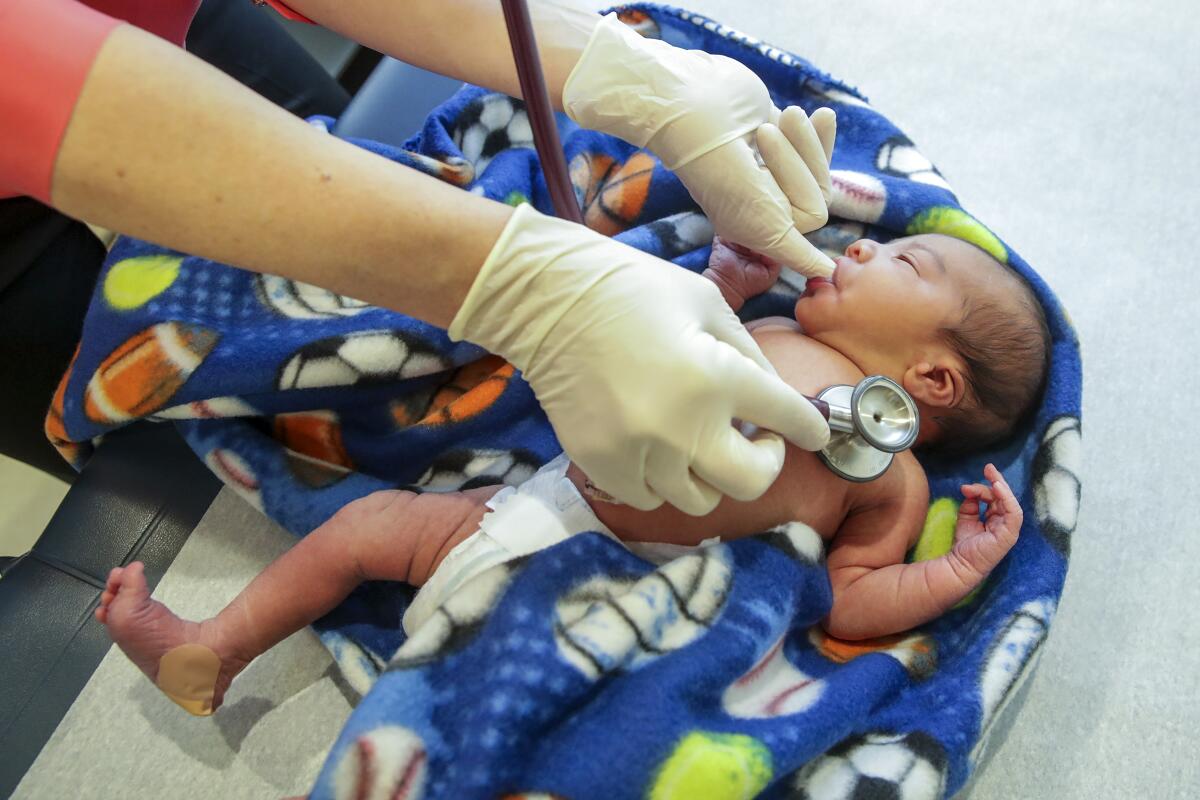
In the Bay Area, Alisha Walker loves her job as a medical assistant at a community clinic geared toward people who need psychiatric care, because “I get to serve the community that I live in.”
But she knows that she could be earning more money elsewhere. Years ago, Walker left a job at LifeLong Medical Care clinics for higher wages at other health facilities, then came back four years ago after growing frustrated with her commute. She had been making roughly $30 an hour and went down to $19 an hour when she returned, she said. To cope with the pay cut, she took a second job working the night shift at UPS.
“I was a zombie. Literally, I was not sleeping at all. It was a mess,” Walker said. But if she hadn’t injured her knee lifting a heavy box, “I’d probably be doing it today,” she said.
Santana Lomeli, the medical assistant in Watsonville, also works a second job as an instructor at a school for medical assistants to make ends meet. His husband, who is also a medical assistant, drives for Lyft at night.
Community clinics were already strained financially before the pandemic, with costs surging much faster than their revenues. In California, such nonprofit clinics rely heavily on government funding, including Medicaid, programs for the uninsured, and federal grants.
Less than a year before COVID-19 arrived, a quarter of California community health clinics had less than a month of cash on hand, according to a financial analysis by the nonprofit Capital Link. COVID-19 piled on new costs and dragged down visits, starving clinics of revenue. Early in the pandemic, more than 200 sites, on average, were sitting closed each week — about 13% of sites statewide, Capital Link found.
Even with federal aid, the California Health Care Foundation said it will likely take years for community clinics to recover financially. Mangia said it didn’t help that California community clinics have long gone unpaid for COVID-19 vaccinations given to Medi-Cal recipients.
In recent months, the Omicron surge pulled many workers away from community clinics as employees got infected and had to isolate or care for sick relatives. Clinics stress, however, that staffing problems have persisted beyond the latest wave, the enduring result of their limitations in the labor market.
“Workforce is probably the No. 1 thing we talk about now, above anything else,” said Susan Dion, chief administrative officer at Valley Community Healthcare. “It’s not even COVID anymore — it’s workforce.”
Dion said turnover in their San Fernando Valley clinics swelled to nearly 37% last year. More than a third of people scheduled for job interviews failed to show up, and 1 in 7 people who were hired did not show up for their first day of work, Dion said.
At Eisner Lynwood Health Center, clinical manager Candy Muñoz said that the worst shortages were earlier this year, when the clinic was operating at less than half its expected staffing. Now it’s around 75%, she said.
“But this is really not normal,” she said.
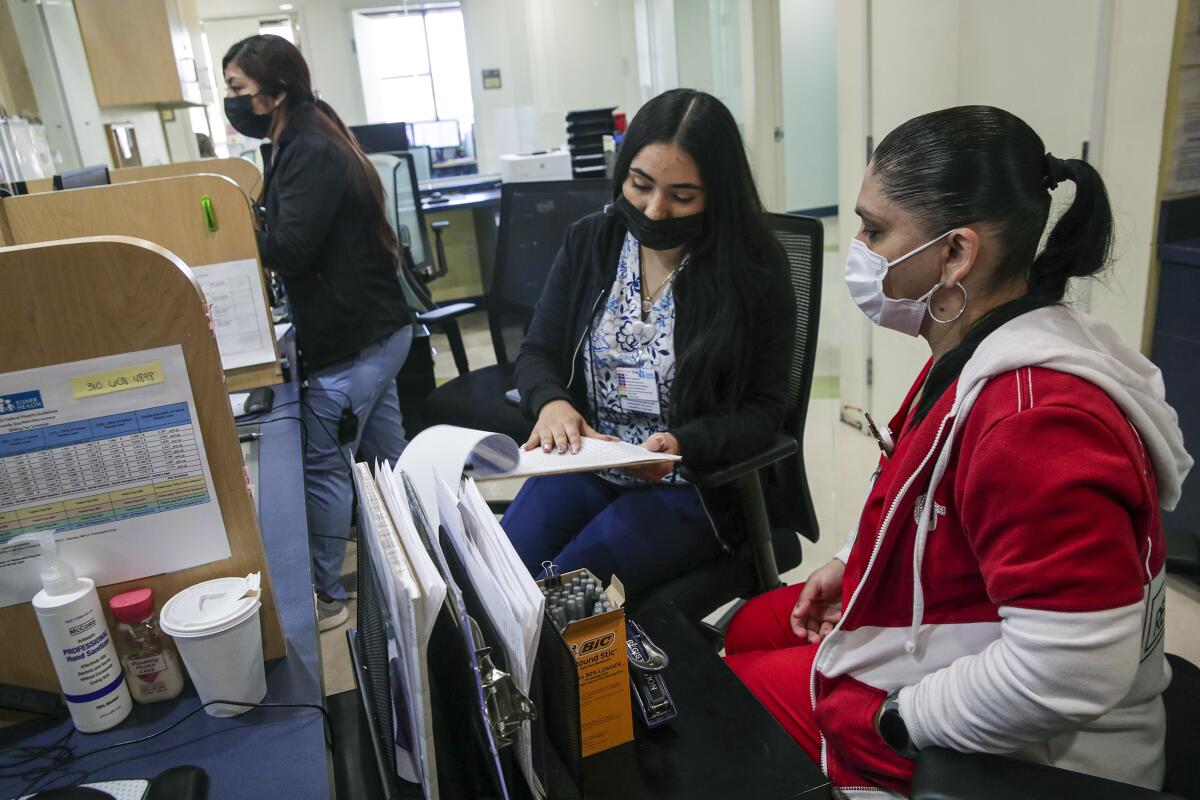
Muñoz said that when the clinics are short on medical assistants and other support workers, there is a “domino effect.” For instance, she explained, an off-site call center used to handle phone calls.
Now they fall to the workers seated behind a clear divider at the front of the Lynwood clinic, who juggled the duties of answering phones and checking patients in and out on a recent morning.
Medical assistant Adriana Perez toggled between the phone, the patients filling the waiting room and the headset on her ear. She greeted a woman who approached the window and, speaking in Spanish, walked her through scheduling her next appointment.
Perez paused a moment to respond to a clinic staffer speaking through her headset — “Can you give me a second? I have a patient” — before pinning down the appointment time and date for the woman, then returned to her headset.
“Anthony? Can you hear me? I have your patient.”
Medical assistants also draw blood for lab work, take vitals from patients, assist with Pap smears and check over patient charts to alert doctors if the next patient is due for a particular screening.
State regulators impose largest-ever fines on L.A. County’s public health system — which serves the county’s poorest residents — for long delays in care.
“The MAs do everything for the provider,” said Muñoz, the clinic manager. If there isn’t a medical assistant at hand, the doctor either spends longer trying to cover some of the preventive screenings the assistant would normally handle — delaying the next patient — or ends up focusing solely on the immediate needs of the patient, she said.
During the severe shortages in January, some of those screenings fell by the wayside, Muñoz said.
Dr. Christina Hillson, medical director and family practitioner at the Lynwood clinic, said that when medical assistants were especially scarce, the clinic stopped drawing blood for lab work from patients. Those patients were instead directed to outside labs, but some never got their blood drawn because of long waits, she said.
“Which doesn’t sound like that big of a deal, but for obstetrical patients, it is a big deal” because they need to be screened for diabetes, which can affect pregnancy and the health of their babies, Hillson said.
Jasmine Rosas, who came to the Lynwood clinic with her newborn baby, Julian, said she had arrived at 7:30 that morning to try to see a doctor, since no appointments were available when she phoned from the hospital.
“Just waiting to be seen — it does take a long time,” Rosas said.
At South Central Family Health Center, Human Resources Director Ingrid Hernandez said its centers, which average around 240 positions when fully staffed, had lost 125 staffers since the pandemic started and had replaced only 85 of them so far. Three of its clinics were temporarily shut in January.
And at Wilmington Community Clinic, “we didn’t have enough staffing to man the phones” as COVID-19 cases surged, Chief Executive Dolores Bonilla said. “It just created this situation where we just couldn’t keep up with the volume.”
At one point, the Wilmington clinic had no referral coordinator. To keep up with referrals, it ended up pulling other employees from their duties, including a medical provider and some assistants, Associate Medical Director Crystal Maciel said in an email. It was taking more than 10 days to submit referrals at one point — which then delayed patients from getting needed care from specialists, Maciel said.
Mangia, the St. John’s president, argued that the problem is rooted in a governmental failure to properly fund clinics for underserved communities. “Why should a nurse who’s committed to the safety net, who wants to work in the inner city or in a poor rural area, make less?” he asked.
Last month, he spoke at a news conference for a state bill, Senate Bill 1014, that would bolster funding for community clinics. Its proponents are seeking $1 billion in added state and federal money.
CaliforniaHealth+ Advocates, which is affiliated with the California Primary Care Assn., has pushed for Gov. Gavin Newsom to allocate $51 million in the upcoming budget to address healthcare worker shortages, including $29 million for loan repayment and scholarship programs.
Brodine, of Eisner Health, said the bedrock issue comes down to Medi-Cal — the California program for Medicaid — which covers more than half of the patients at California community clinics.
“The reality is that the state of California underfunds Medicaid at every step of the way,” he said.
More to Read
Sign up for Essential California
The most important California stories and recommendations in your inbox every morning.
You may occasionally receive promotional content from the Los Angeles Times.
